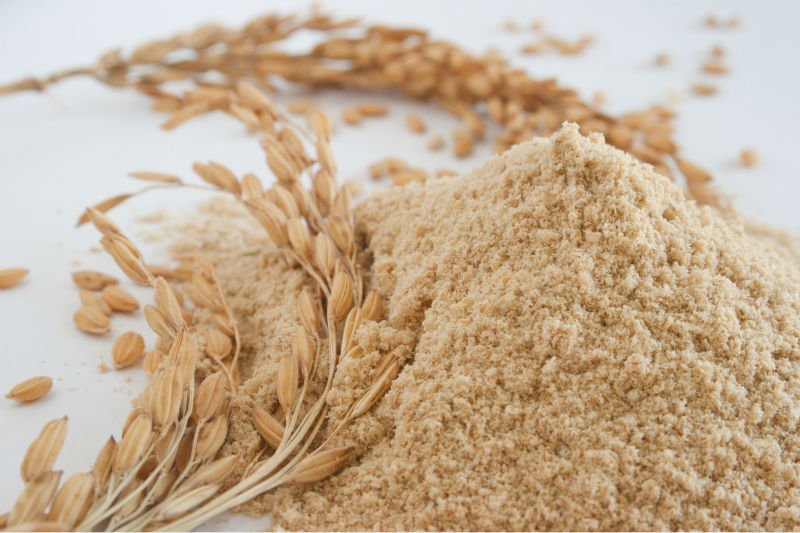Using Stabilized Rice Bran as an Alternative & Value Added Feed Supplement

What is rice bran?
Rice bran is a byproduct of the rice milling industry. The actual "bran" comes from the hard outside layer(s) of the rice grain. Bran can come from any cereal grain, but in this case, all I will be talking about is rice bran in this post.
I just happened to stumble upon some rice bran at D&B Supply the other day in the horse department (because I had a little browsing time:) I haven't been able to find any specialty feed products available in Idaho, or at least in large quantities. Sometimes it's a good idea to change the chickens' diet up every once in a while, and when you can get more ingredients that are high in protein, vitamins, fats, and other value-added items, you can create better feeds/enhance feed value, which in turn enhances product value.
The cool thing about rice bran is that it has a lot of amino acids and fatty acids in it, such as omega-3's. However, keeping those fats from oxidizing can be the challenge, especially when those fats contain a large portion (20%) of that ingredient's value. Essentially, there are enzymes that are activated during the milling process that cause the fat in the rice bran to oxidize rapidly; and in order to keep the fat from oxidizing, the rice bran is heat treated (called 'stabilization') to "de-activate" those enzymes.
Not only does rice bran have omega-3's, but it also has vitamin E and phosphorous in it too. Basically, rice bran has great nutritive value not only for the chicken, but also for people like you and me who eat the eggs!
The only drawback to rice bran is that if fed more than 15% of the total diet, the anti-nutritional factors within it can have adverse affects on the chicken's production; but, studies have shown that rice bran in concentrations of 5-10% haven't shown any noticeable decrease in production or egg quality.

Comments
Post a Comment